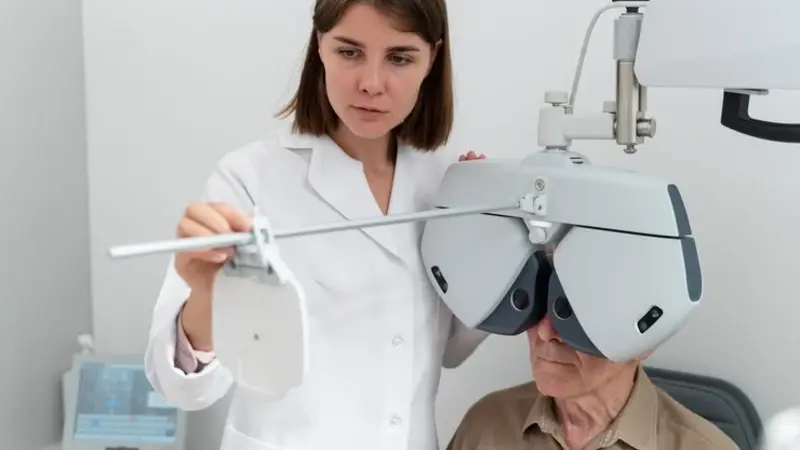In an era where digital health innovations are transforming medical care, teleophthalmology emerges as a beacon of progress in the field of eye care.
This specialized branch of telemedicine applies telecommunications technology to provide ophthalmic consultation and diagnosis remotely, offering a glimpse into the future of accessible and efficient eye care.
The blog post titled “Seeing Clearly: Exploring Teleophthalmology Capabilities” delves into the advancements, challenges, and potential of teleophthalmology in revolutionizing eye health services.
The Vision Behind Teleophthalmology:
Teleophthalmology is not just about overcoming geographical barriers; it’s about envisioning a world where quality eye care is within everyone’s reach. With the increasing prevalence of eye conditions globally, coupled with a shortage of ophthalmologists in underserved areas, teleophthalmology stands out as a critical solution to bridge the gap between demand and supply of eye care services.
Advancements in Teleophthalmology:
The field of teleophthalmology has seen significant advancements in recent years, driven by technological innovations.
High-resolution digital imaging and real-time video conferencing have made it possible to conduct comprehensive eye examinations remotely.
Artificial intelligence (AI) plays a pivotal role in analyzing retinal images for signs of diabetic retinopathy, glaucoma, and age-related macular degeneration, facilitating early detection and intervention.
Applications and Benefits:
Teleophthalmology’s capabilities extend across various aspects of eye care, from screening and diagnosis to post-operative follow-up and chronic condition management. Its applications include:
- Remote Diabetic Retinopathy Screening: Teleophthalmology enables widespread screening for diabetic retinopathy, a leading cause of blindness among working-age adults, allowing for timely treatment to prevent vision loss.
- Glaucoma Monitoring: Patients with glaucoma can have their intraocular pressure monitored remotely, reducing the need for frequent hospital visits.
- Age-related Macular Degeneration (AMD) Management: Teleophthalmology facilitates regular monitoring of AMD patients, ensuring early detection of any changes that may require treatment adjustments.
The benefits of teleophthalmology are profound, including increased access to specialist care, reduced travel and waiting times for patients, and enhanced efficiency in healthcare delivery.
It also allows for better allocation of resources, as routine screenings and follow-ups can be managed remotely, freeing up specialists to focus on more complex cases in person.
Overcoming Challenges:
Despite its promise, the adoption of teleophthalmology faces several challenges.
Issues such as ensuring patient data privacy, integrating teleophthalmology services with existing healthcare systems, and addressing technological disparities among populations are paramount.
Furthermore, there’s a need for clear regulatory frameworks and reimbursement policies to support the widespread implementation of teleophthalmology services.
The Future of Eye Care:
As we look ahead, the potential of teleophthalmology to transform eye care is immense.
With ongoing advancements in technology and a growing emphasis on patient-centred care, teleophthalmology is poised to become a cornerstone of ophthalmic services. The future may see even greater integration of AI and machine learning, further enhancing diagnostic accuracy and personalized treatment plans.
The Role of Ophthalmology EMR Software in Teleophthalmology
Integrating Electronic Medical Records (EMR) software specifically designed for ophthalmology is a pivotal step in enhancing teleophthalmology’s efficiency and accuracy.
Ophthalmology EMR software streamlines the process of storing, retrieving, and managing patient data, ensuring that detailed patient histories, diagnostic images, and treatment plans are readily accessible to healthcare providers, regardless of their location. This seamless access to information facilitates a more coordinated care approach, which is particularly important in remote settings where comprehensive patient data must be obtained quickly and securely.
Additionally, the software can be equipped with specialized tools for eye care professionals, such as digital drawing capabilities for annotating eye images and integrated decision support systems that leverage AI to assist in diagnosing and planning treatment. By marrying ophthalmology EMR software with teleophthalmology platforms, we can further personalize patient care, improve outcomes, and pave the way for a new horizon in global eye health services.
Conclusion:
By harnessing the power of digital technology, teleophthalmology offers a clear vision for the future of eye care—one that is accessible, efficient, and patient-focused.
As we navigate the challenges and embrace the opportunities, teleophthalmology stands as a testament to the transformative potential of telemedicine in achieving global health equity.
As we continue to advance in our journey towards innovative healthcare solutions, teleophthalmology exemplifies how technology can be leveraged to meet the evolving needs of patients and practitioners alike.
The promise of teleophthalmology is not just in seeing clearly—it’s in envisioning a world where quality eye care knows no boundaries.
